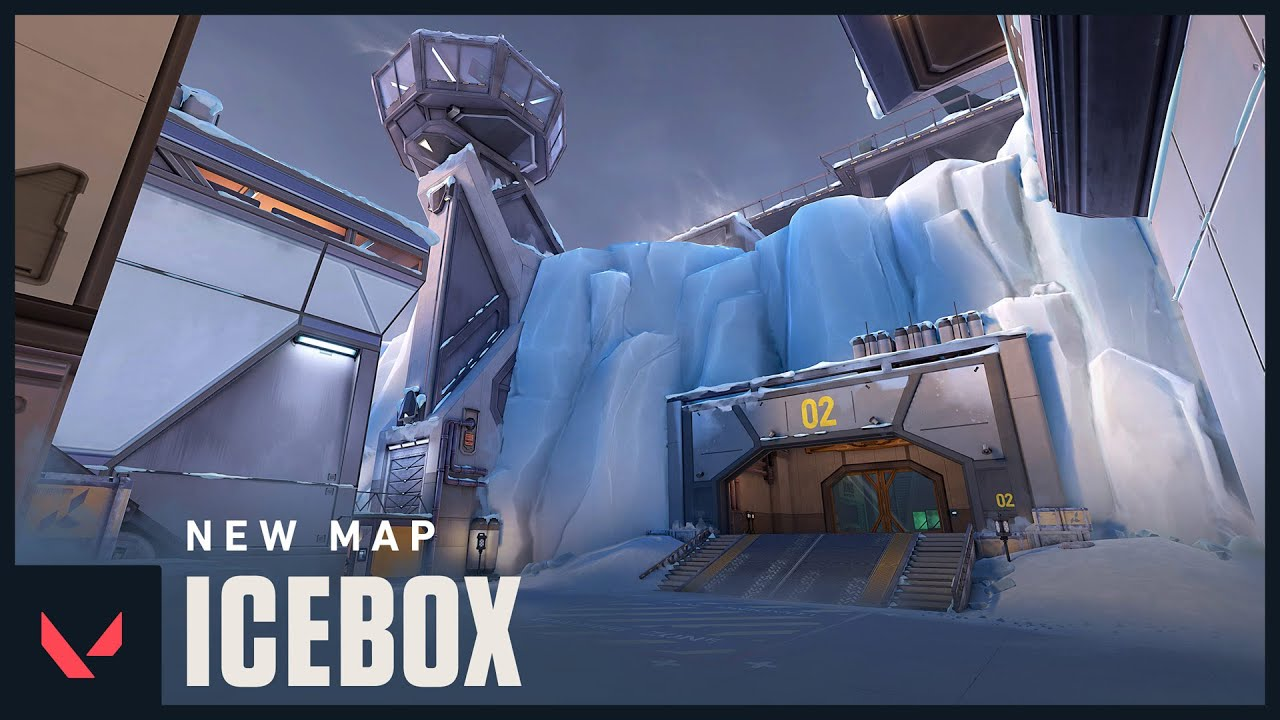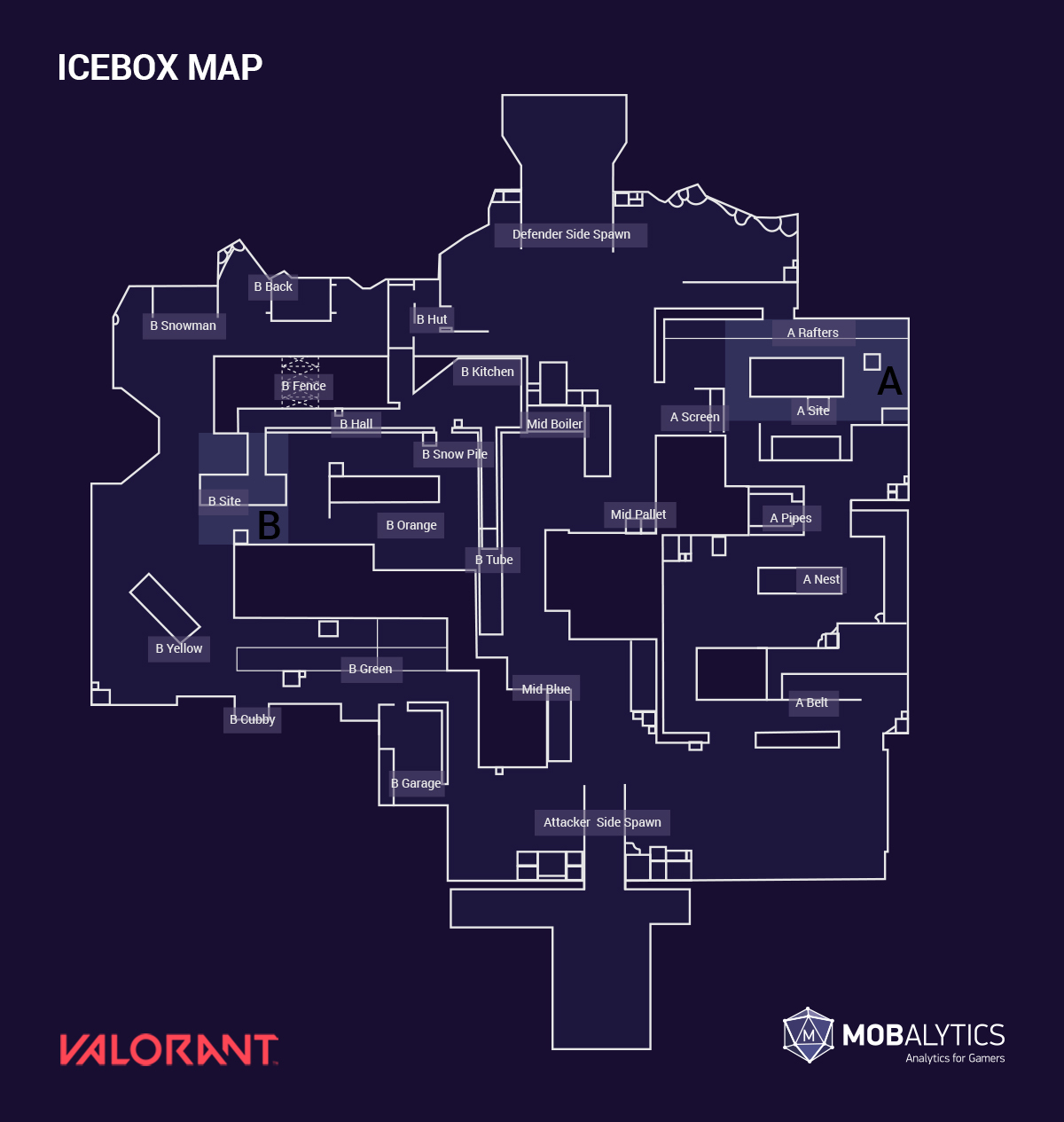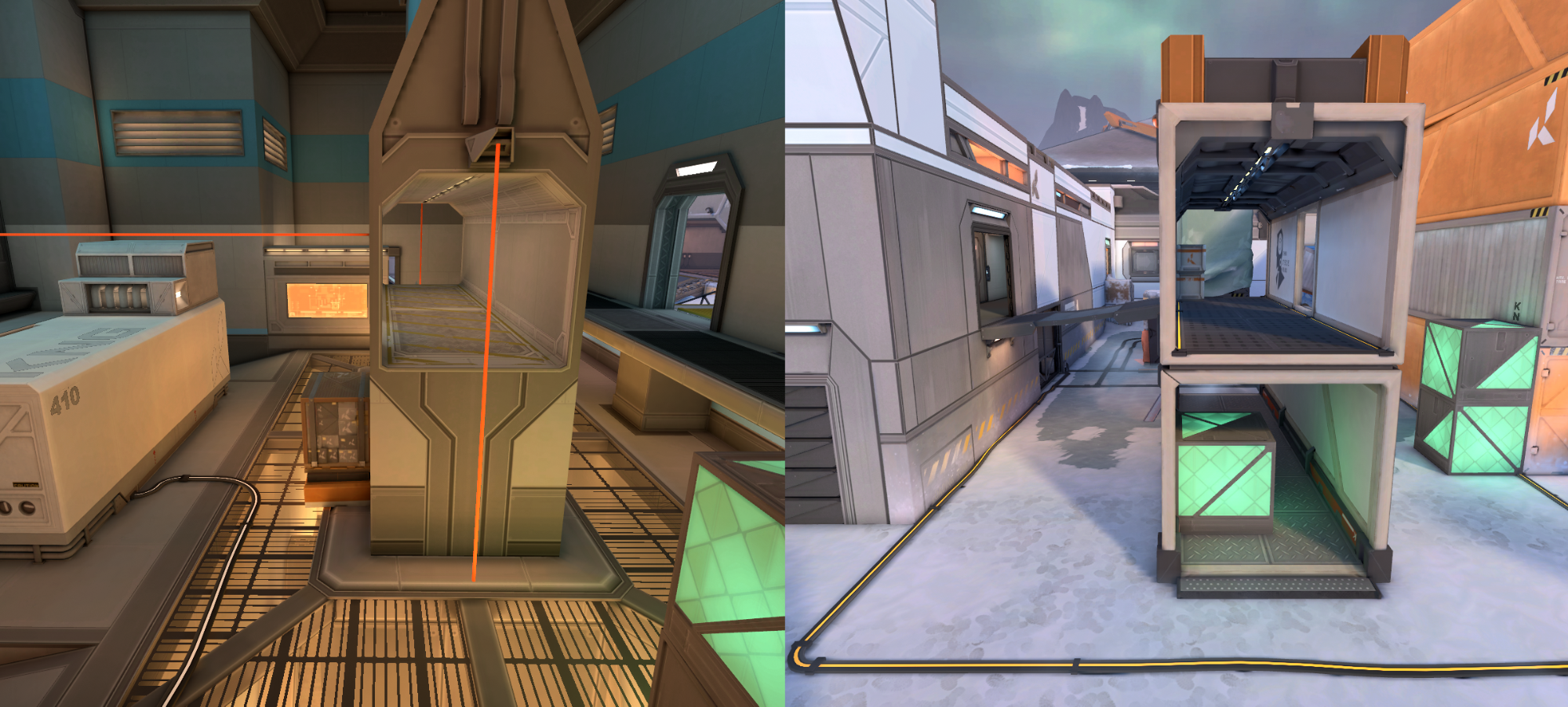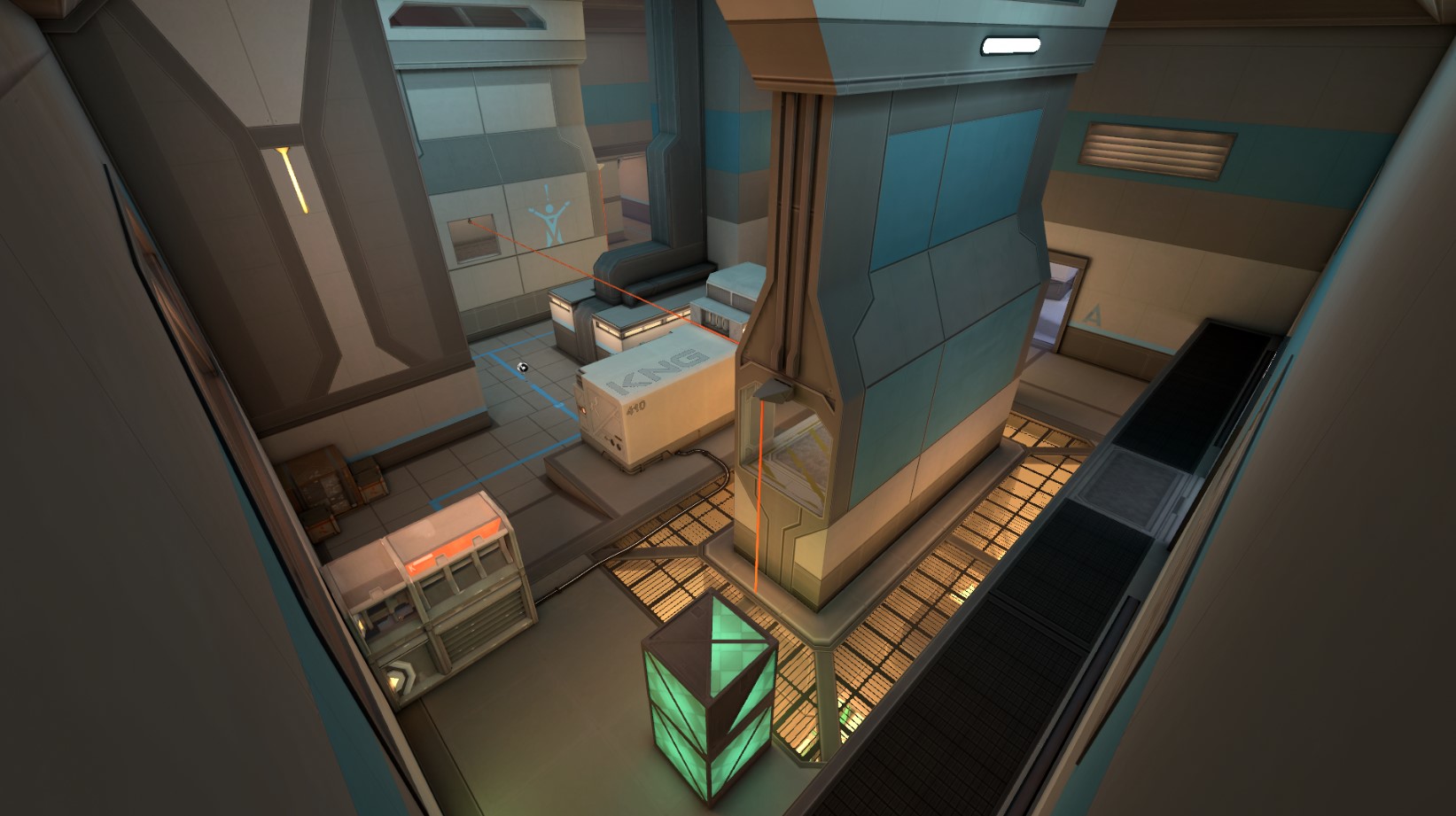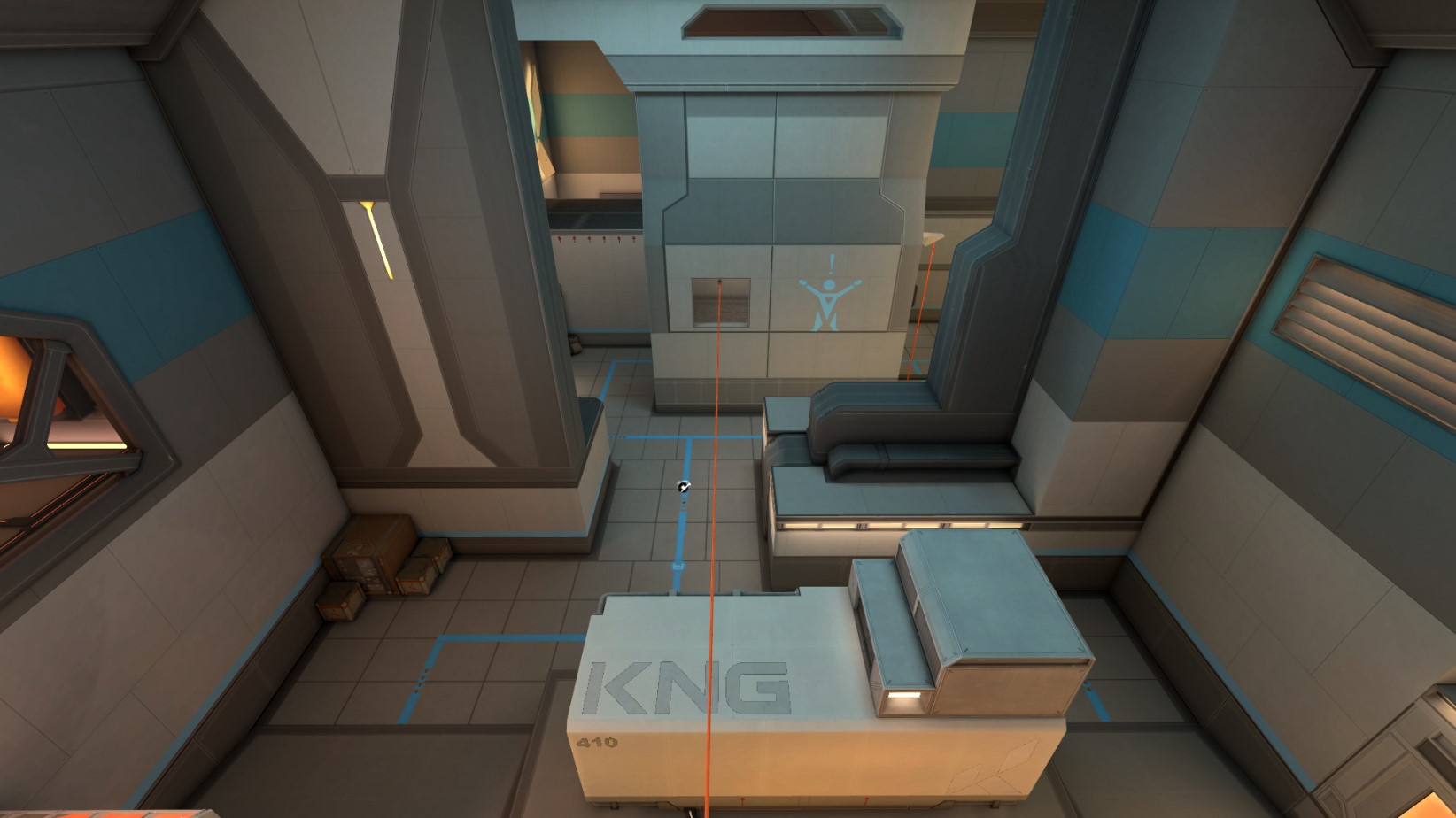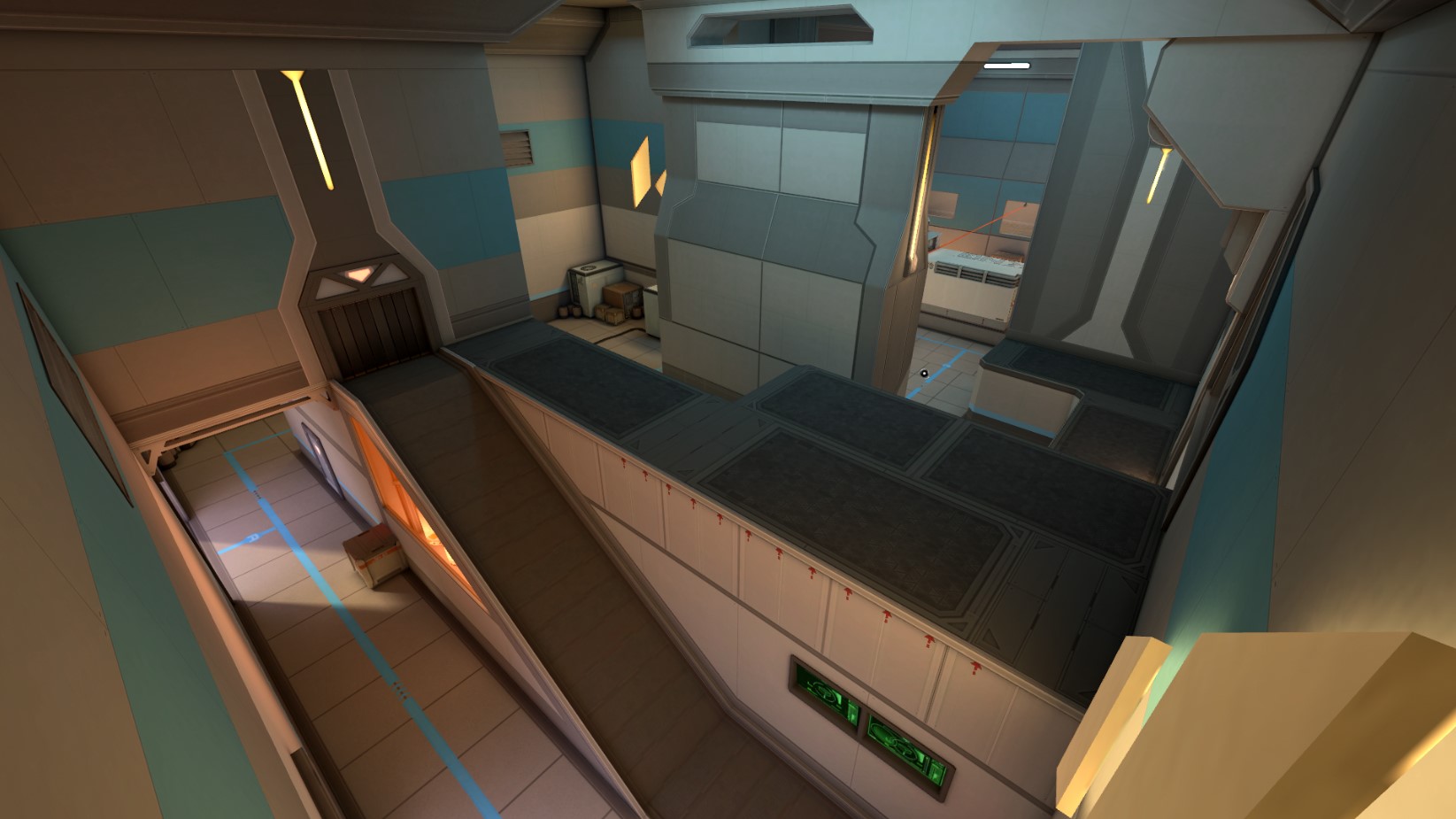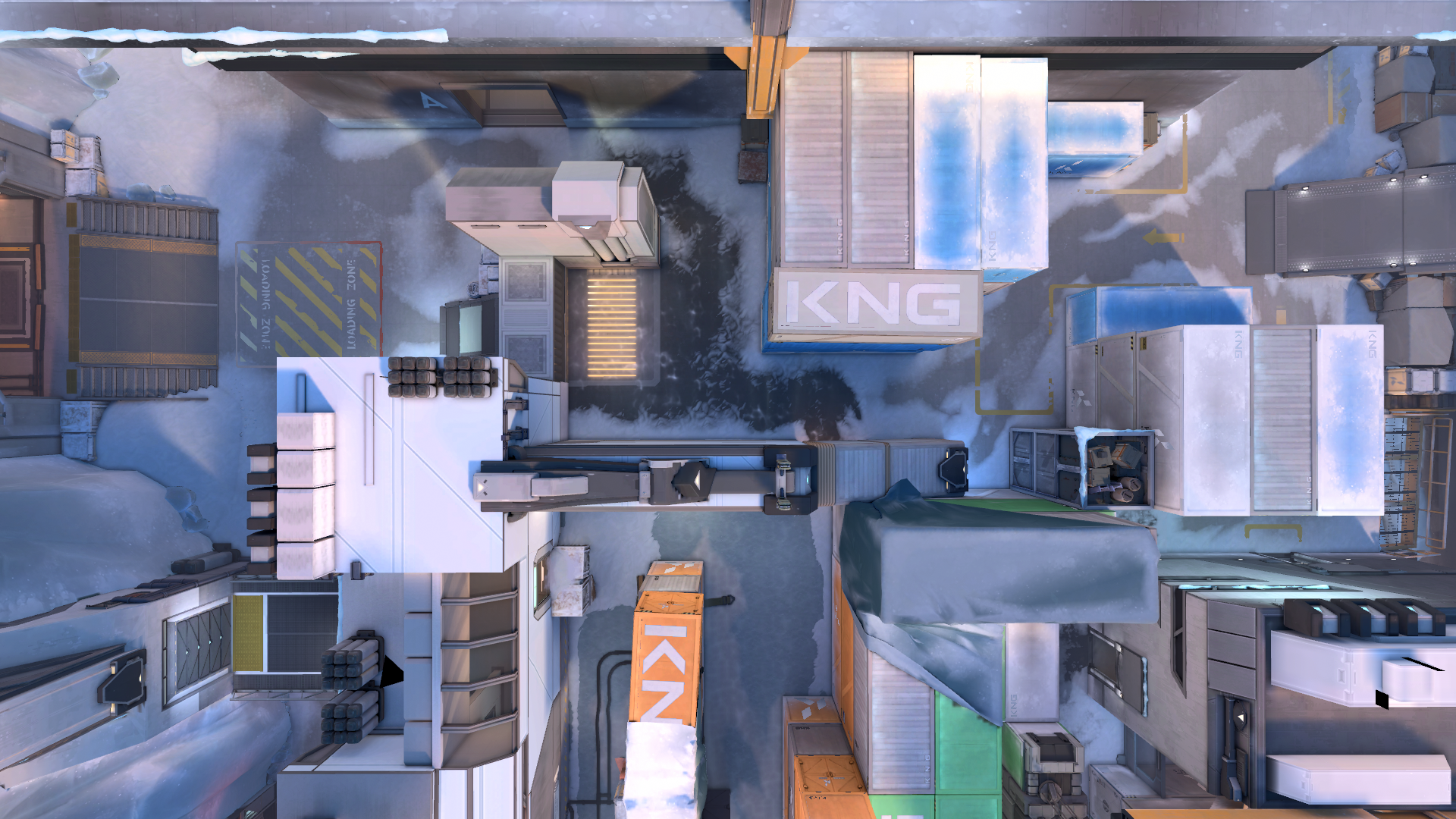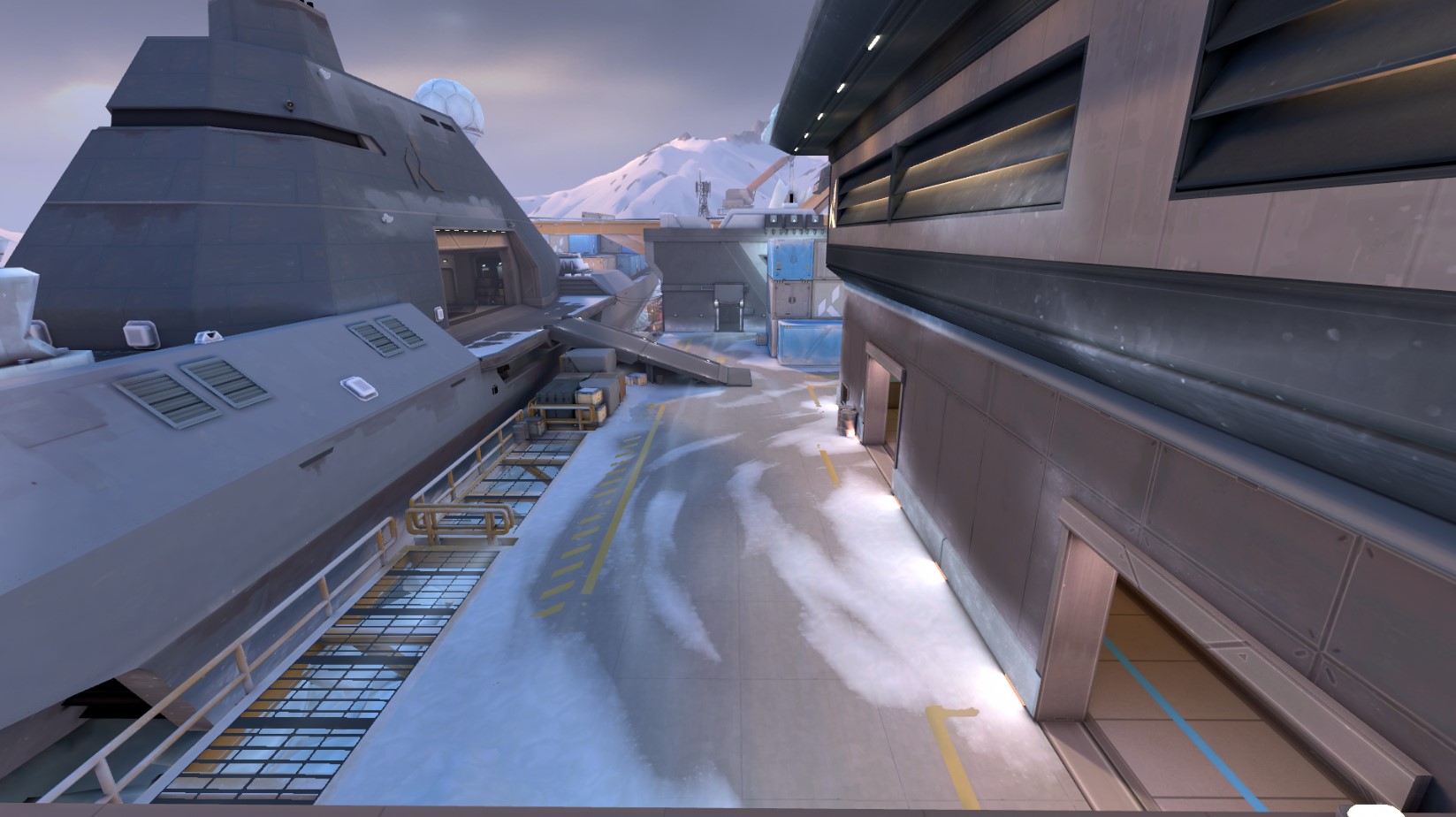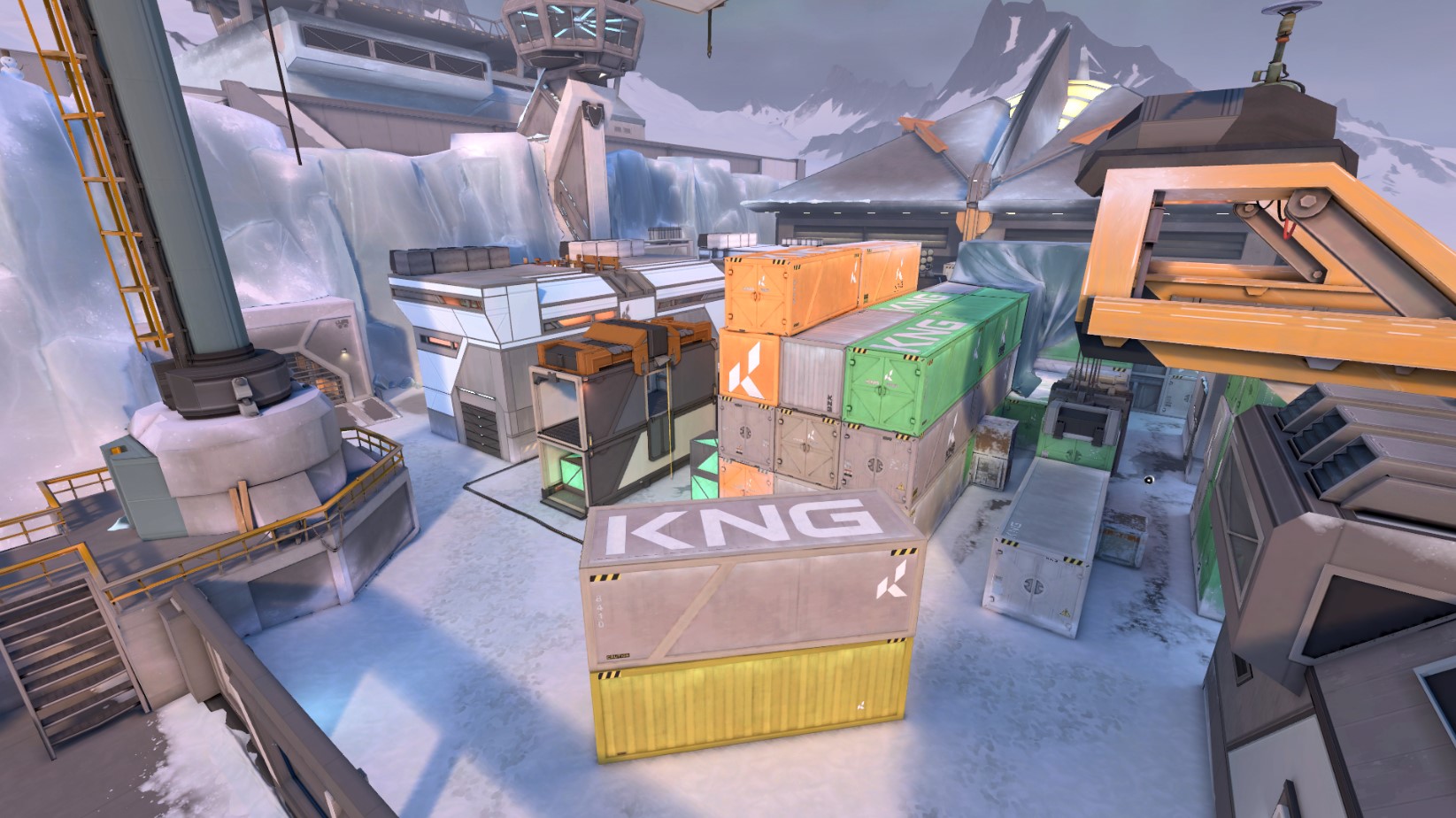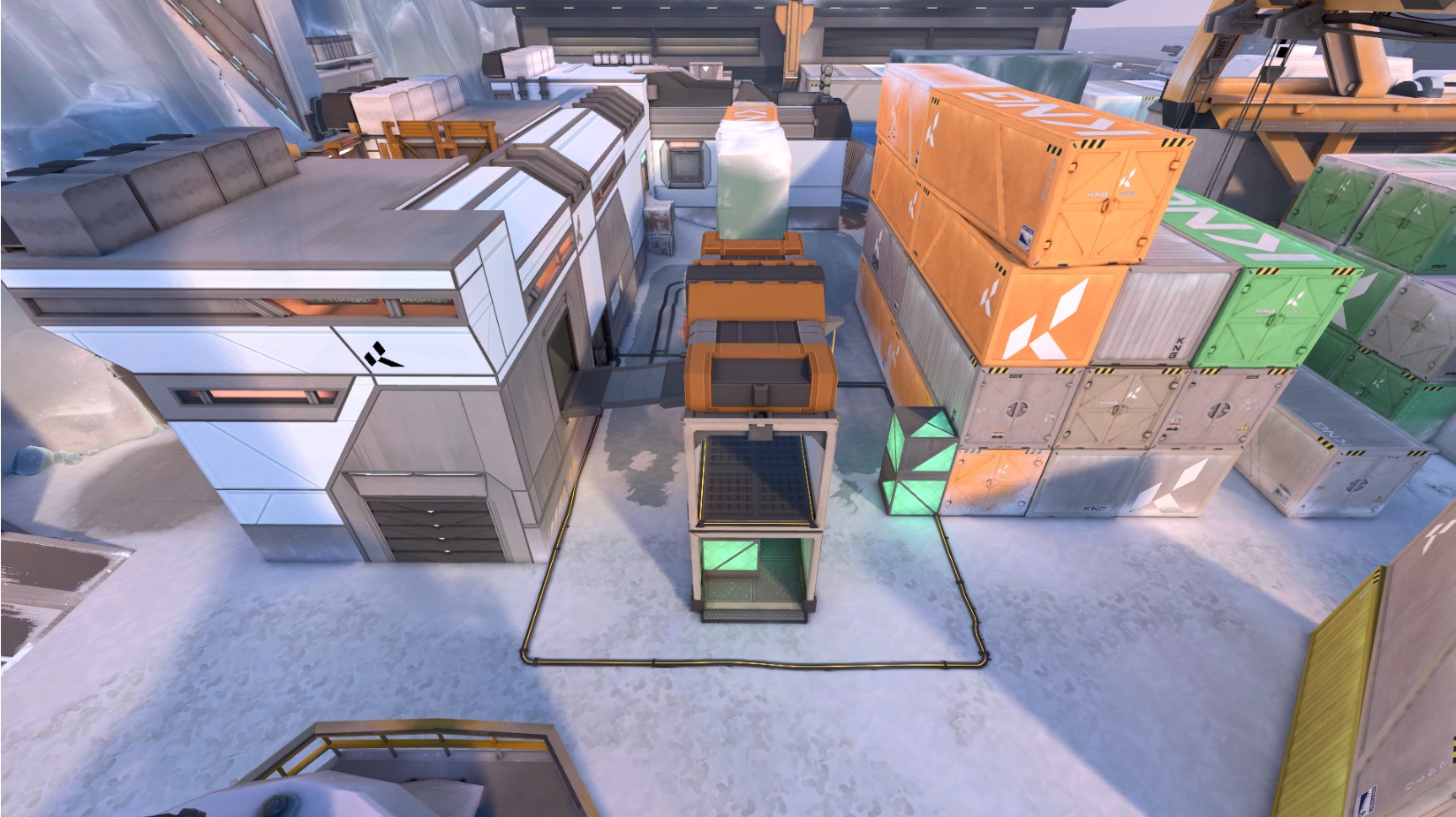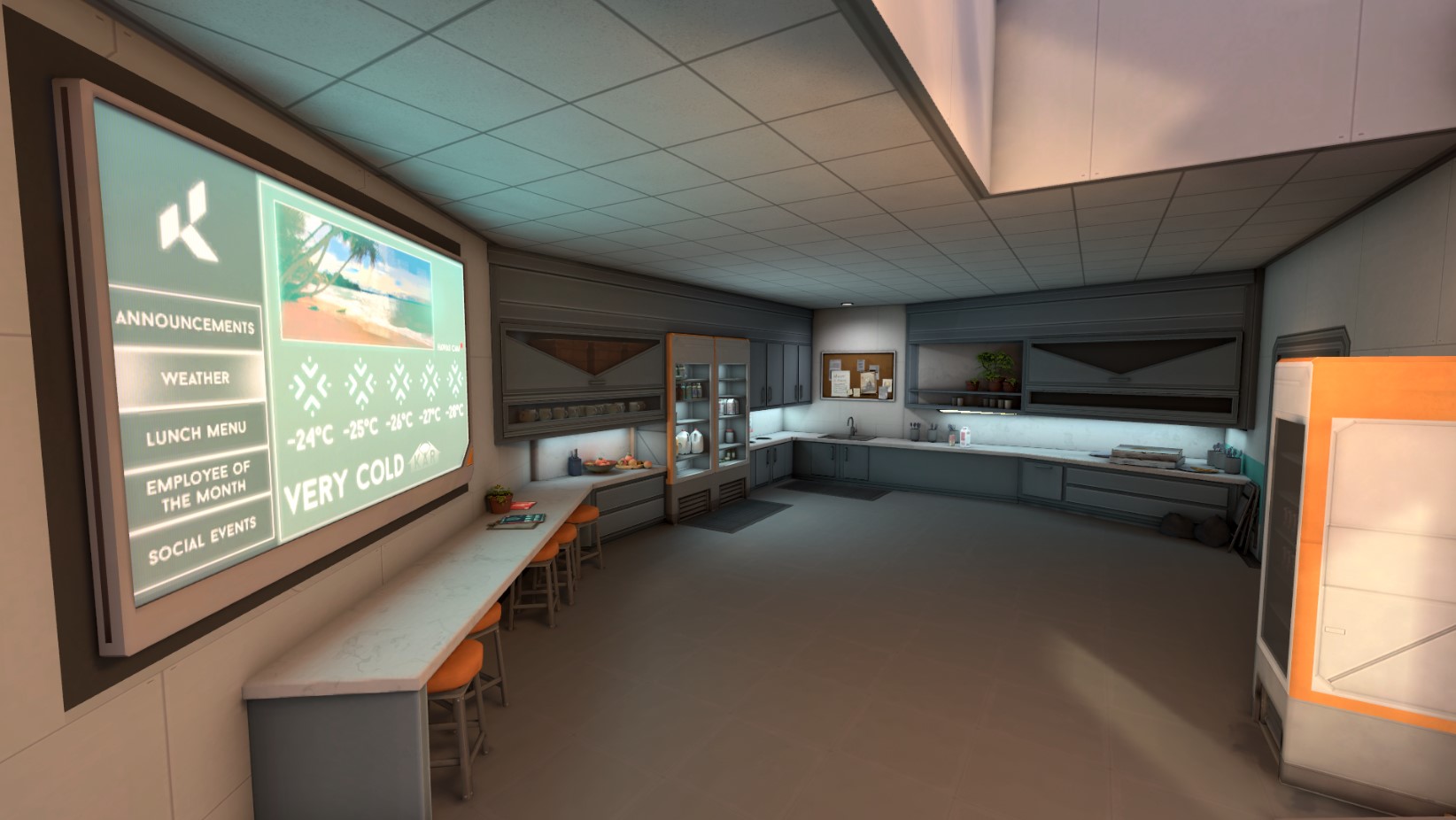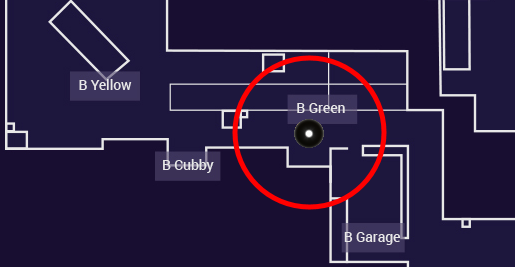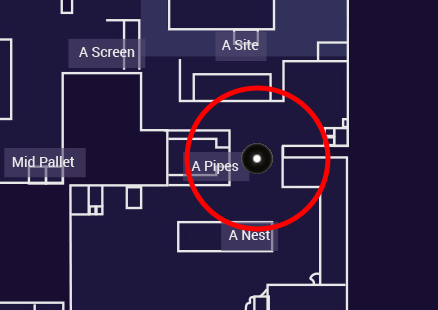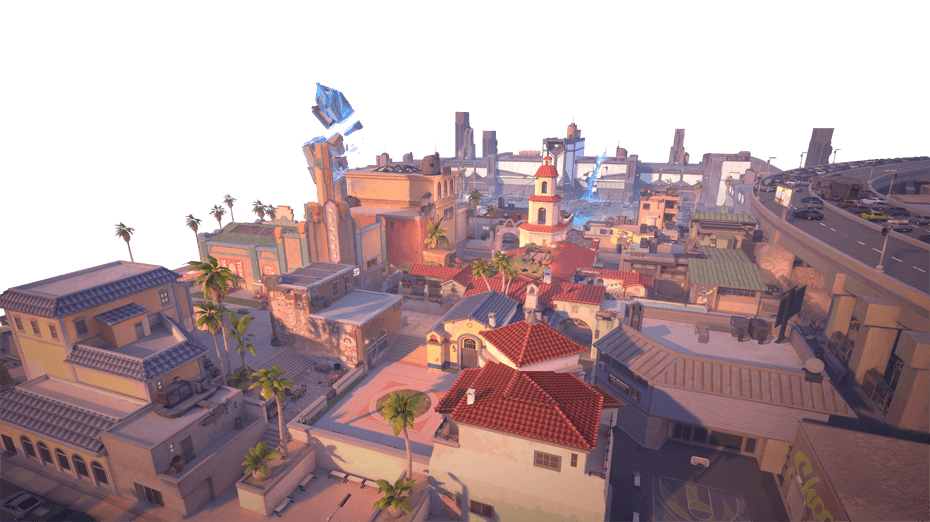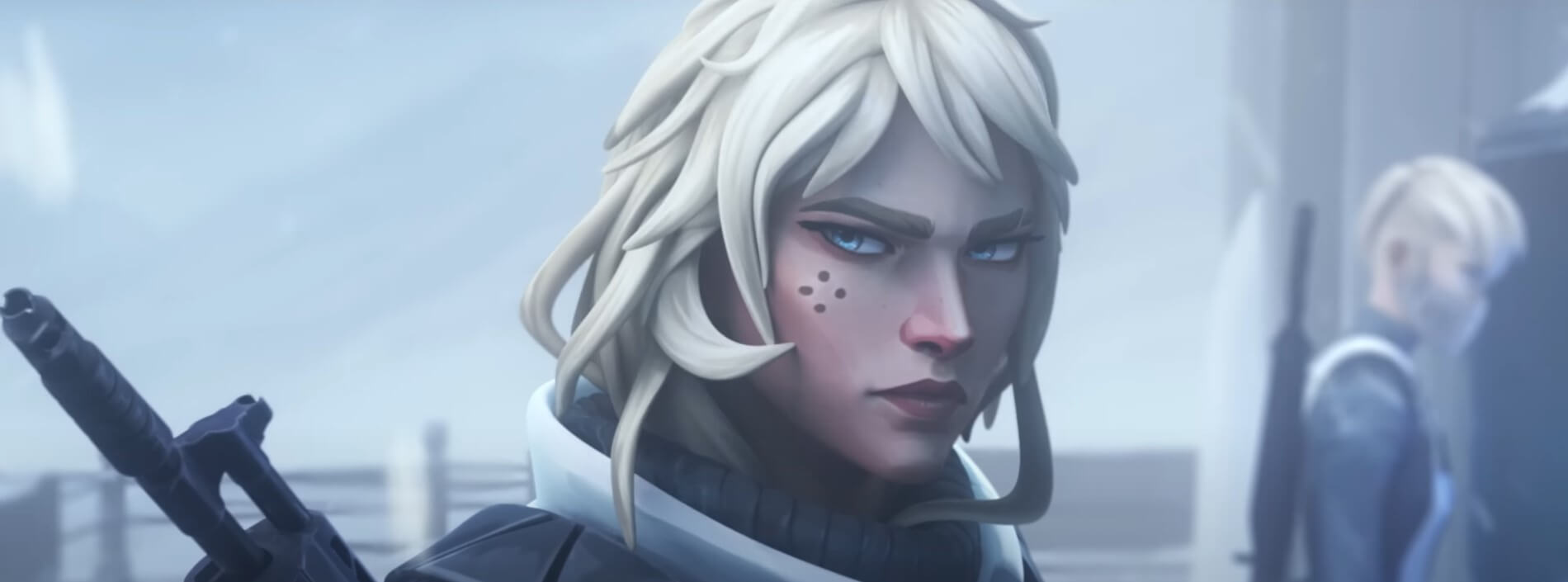Icebox Map Guide
After countless teasers by Riot and weeks of speculation about the true meaning of these hints, Valorant finally received the fifth map in the map pool: Icebox.
Icebox takes place in the harsh cold of the arctic tundra and brings besides its unique setting a whole bunch of new gameplay mechanics and exciting tactical possibilities.
The map has a ton of verticality, a ridiculous amount of different angles, and is by far the most complex map released yet.
Players in the community that criticized the more or less boring map designs of Haven, Bind, Split, and Ascent seemingly weren’t left ignored by the Valorant developers.
In comparison, Icebox’s general structure, buildings, and details of the map are highly demanding to play and master.
There are also unique features of the map such as vertical and horizontal ropes (zip lines) and two-tiered planting sites, meaning that you have a low ground option to plant on and a high ground one.
Today, we are taking a closer look at the specifics of the new map Icebox and what in-game approaches might make sense for you.
As always, have fun reading and hopefully, you can learn something useful here!
The General Layout
Icebox has two Spike plant sites just like Bind, Split, and Ascent.
But unlike these mentioned maps, Icebox benefits from much more complex and creatively designed areas that will shape the upcoming combat in a way unique to Valorant.
In between the sites A and B is a traditional Mid area located which can lead to both sites from behind or the flanks.
A site is inside a large research/laboratory facility and contains different types of ropes (vertical & horizontal) as a preferred mode of transport.
B site on the other hand enjoys the fresh air of the Arctic tundra and mixes in with lots of containers and cranes.
In general, Icebox is a very wide, open map with a lot of long-distance fights for defenders and attackers. Additionally, substantial height differences all over the map favor specific agents who can bypass them. (e.g. Jett, Omen, Raze)
The fact that the warm-up spawn barriers of defender and attacker side at the beginning of the round are in very close proximity suggests extraordinarily fast encounters with the enemy and rapid gameplay in general.
In the following sections, you can learn how the different sites and areas of Icebox look in detail and how the meta on this map is probably going to play out.
Icebox’s Spike Planting Areas
Icebox is the first map to introduce multi-leveled Spike planting areas to Valorant.
This new design brings a lot of changes to the way the sites are going to be played by the defender side and especially the way afterplants will play out.
Since you can plant in an elevated area above most on-ground obstacles, the view on the Spike by the attackers will for the most part be assured at all times.
In a short time, the best plant spots will be commonly known and rounds will frequently be decided by a successful Spike plant.
Additionally, the sound system in Valorant is not perfectly adjusted at this point in the game.
That will make it harder for defenders to locate the Spike by only hearing its timer and whether it is planted on the first or second floor will be a topic of many heated in-game discussions.
Icebox’s A Site
The A site is literally the embodiment of Icebox’s most distinct trait: verticality.
All over A are boxes, generators, and Radianite crates. Not to mention the zip line and the two-tiered planting site.
For every corner you are checking when entering the site, you also have to look above and below regarding where you are positioned.
Due to these unique circumstances on the A site both attacking and defending must be adjusted accordingly.
The A site in summary:
- Vertical and horizontal ropes (zip line)
- Two-tiered Spike planting area
- Mostly long-distance fights → Vandal / Phantom / Operator preferred
- Defenders: have more room than Attackers right after the warm-up phase
- Attackers: Splits through Mid not absolutely necessary
Icebox’s Mid
The Mid area of Icebox is a pretty plain and actually the simplest part of the map.
Merely the existence of an annoying headshot angle at the defender spawn spices things up and will induce aim battles harder to take for the attacker side.
The Mid area of Icebox is comparable to the Mid area of Ascent: Control over Mid helps your team immensely, regardless of the side you’re on.
The Mid area in summary:
- Necessary for attackers to go B (not necessary for A)
- Relatively plain battlefield compared to the rest of the map
Icebox’s B Site
The B site is the most complex and incomparable part of the new map Icebox.
Two parallel pathways that both are repeatedly separated by containers lead to the B site. The difference between both is: For one of them, you do need Mid control and for the other one you don’t.
But both pathways lead to B site which is, like on A site, a two-tiered Spike planting area with a rope to reach the upper section.
Defenders playing on the B site have to keep their attention on three different entrances: B Tube to Kitchen and the two parallel pathways (B Green + B Orange).
Because of this, playing the Kitchen is a must-have since you can watch both B Tube and B Orange.
The B site in summary:
- Vertical ropes
- Two-tiered Spike planting area
- Mixed range fights → Shotguns / Spectre legitimate in some cases
- Defenders: Have to watch three possible entrances (if no Mid control)
- Attackers: Splits through Mid necessary
How the different positions and sides of Icebox are going to be played in the future remains to be seen but tendencies and predictions can partly be done by just analyzing the map.
Icebox’s Ultimate Orbs
Just like on all other maps in the current map pool there are two Radianite Orbs on the map that both teams can pick up and save for the players next Ultimate.
Usually, each of these Orbs is more attainable for one team than for the other.
This is also the case on Icebox:
The first Orb is placed near B Green and is noticeably easier to collect by the attacker side due to the closer proximity and the fact that all vision onto the Orb can easily be smoked off.
The second Orb near A is almost always free to get by the defender side because the way the spawn barriers are set on this part of the map doesn’t even allow attackers to get sight on the Orb in time.
Recommended Agent Selection
In this section, we’ll recommend an example team comp and explain why the agents are good on Icebox.
Raze – Jett – Omen
Icebox is a great map for agents like Raze, Jett, and Omen that are able to make good use of all the boxes and elevated positions. Besides, every single one of them has a strong ability set anyway as smokes, nades, and dashes are key in Valorant.
Sova
Sova’s Recon Bolt is one of the only possible ways to clear several positions at the same time.
Because Icebox is such a wide variety of low/high grounds and there are quite a few spots on the map that can easily be wallbanged, Sova will be a valuable pick on the new map, too.
Killjoy
The ongoing rivalry between Cypher and Killjoy for the spot of the “I can hold a site alone” agent goes on Icebox in favor of the German hipster girl.
The unlimited range of KJ’s turret is a huge plus on such a big map with many long-distance chokepoints. Also, Cypher’s traps often can’t be used in specific areas because the passages are simply too wide.
For more map insights, head to our Valorant Maps feature. To keep up with our updated recommended agent comps, head to our Valorant Agent Tier List.
 Download APP
Download APP Collapse
Collapse